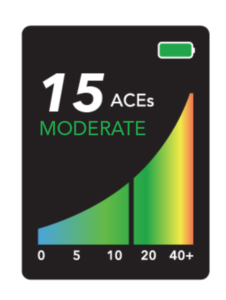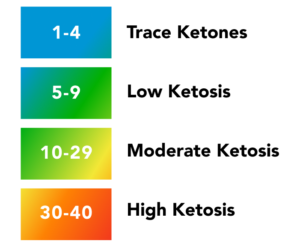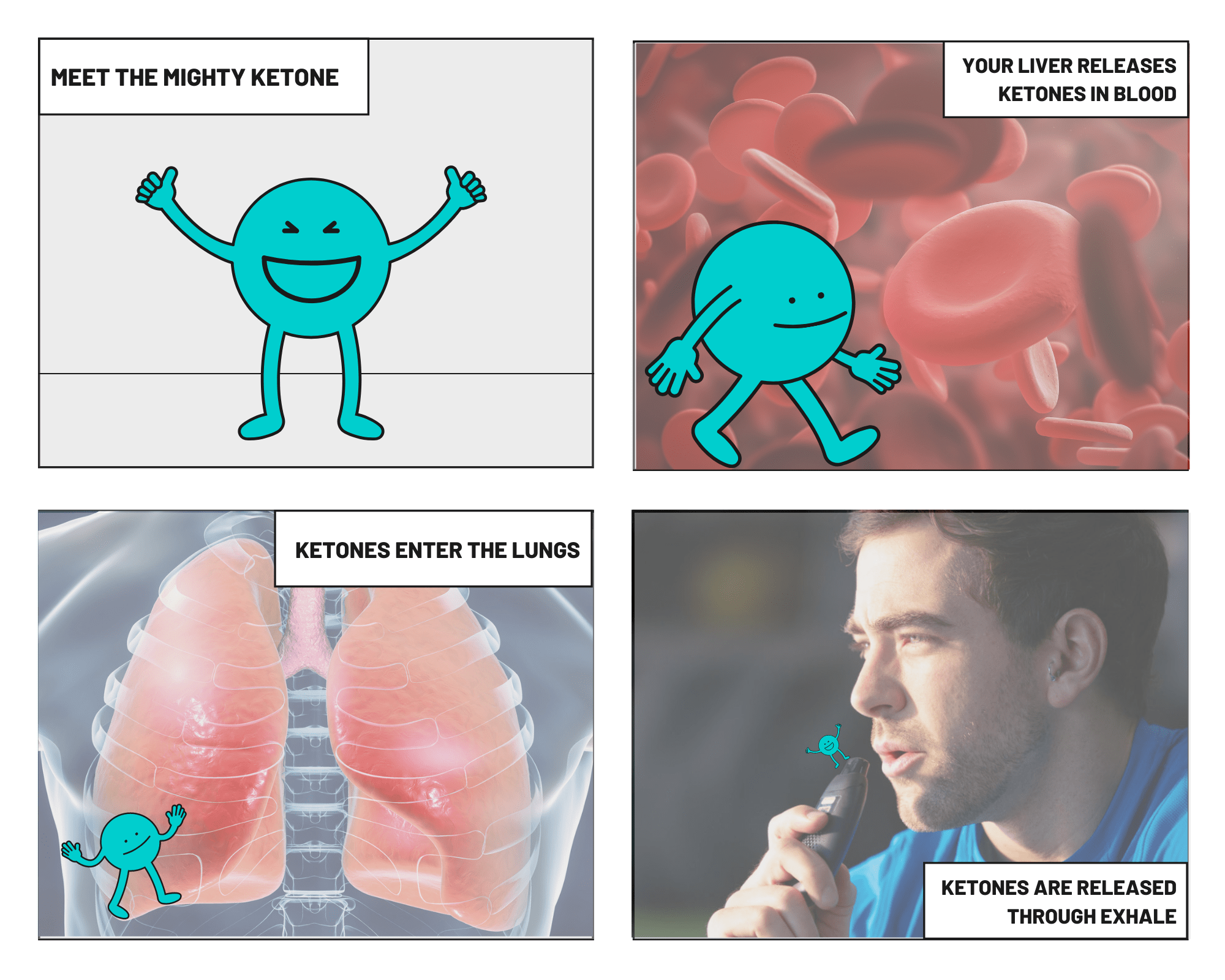If you have tried or researched the BIOSENSE device, you may have noticed that breath ketone test results are reported in units called ACEs.
But what exactly are ACEs?
ACEs are a unit that translates parts per million (ppm) of breath acetone into a blood ketone equivalent.
Published studies and our own clinical research has shown that blood and breath ketones are closely related. While the correspondence is not 1-to-1, knowing your breath acetone concentration does allow us to make educated predictions about your blood ketone levels.
For example, 2 ppm breath acetone corresponds to approximately 0.5 mmol/L in blood ketones. The ACEs unit is approximately equal to 10x the blood ketone equivalent. Sticking with the above example, 0.5 mmol/L in blood corresponds to an ACEs level of 5.
To summarize: 2 ppm breath acetone corresponds to 0.5 mmol/L in blood ketones, which corresponds to 5 ACEs.
It is important to remember that the 10x correspondence may not be observed for all measurements. The precise blood/breath correspondence depends upon the individual and upon several other factors (there is some interesting research to be done here!). For example, blood and breath ketones do not change at the same rate, and this can lead to deviations from the 10x correspondence when comparing blood and breath directly. If you keep these factors in mind, 10x is a good rule of thumb.
The BIOSENSE device and mobile app put your measurement into context by providing a color indicator along with your ACEs reading. The vertical black bar on the device result screen indicates where your measurement falls on the overall spectrum of ketosis.

The color BLUE indicates low ketones; the color GREEN indicates that you are in ketosis; the colors YELLOW and ORANGE indicate very high ketones. The same color guide appears on the Day view of the BIOSENSE app.
In this way, the BIOSENSE measurement system provides insight at two levels of granularity: first, your ACEs reading tells you your precise ketone level on a scale from 0-40; and second, the corresponding color tells you where you sit on the broader spectrum of ketosis.

In summary, the ACEs unit was created to provide quick and easy feedback about your state of ketosis by translating breath acetone (ppm) into a whole-number blood ketone equivalent. By understanding how your ACEs level changes throughout the day, you will be well equipped to make informed decisions about your diet and lifestyle.




